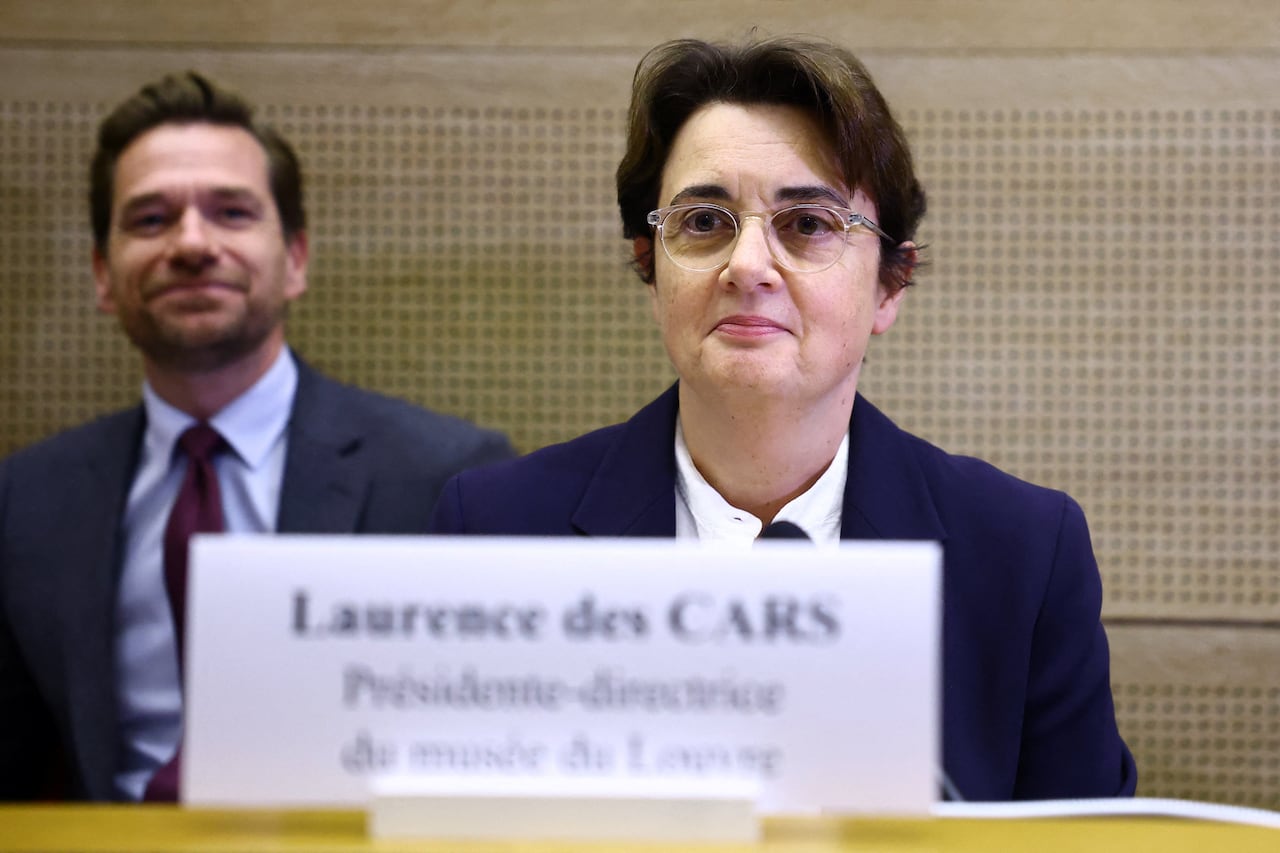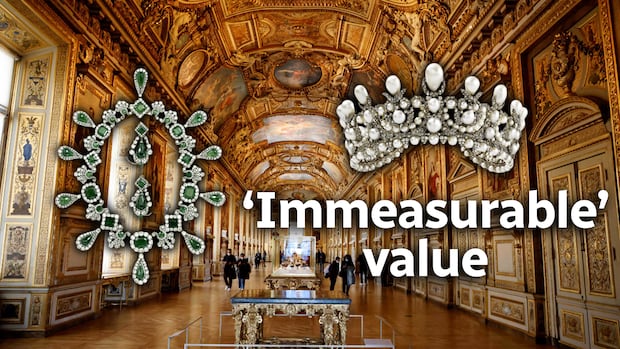The director of the Louvre acknowledged on Wednesday a ″terrible failure″ at the Paris monument after a stunning daylight crown jewel heist at the world’s most-visited museum, and said she offered to resign but it was refused.
The Louvre and its star attractions — from the Venus de Milo to the Winged Victory of Samothrace — reopened to long lines on Wednesday for the first time since one of the highest-profile museum thefts of the century stunned the world with its audacity and scale.
In testimony to a French Senate committee, Louvre director Laurence des Cars said Sunday’s theft exposed a damaging shortage of security cameras outside the museum and other ″weaknesses.”
Under heavy pressure over a theft that stained France’s global image, des Cars testified that she submitted her resignation but that the culture minister refused to accept it.
″Today we are experiencing a terrible failure at the Louvre, which I take my share of responsibility in,″ she said.
The thieves slipped in and out, making off with eight pieces from France’s crown jewels — a cultural wound that some compared to the burning of Notre-Dame Cathedral Paris in 2019.
The Sunday raid — steps from the Mona Lisa — has put embattled President Emmanuel Macron, des Cars and others under fresh scrutiny. It comes just months after employees went on strike, warning of chronic understaffing and underresourced protections, with too few eyes on too many rooms.
Crowds bunched at the barriers as they were being removed on Wednesday, a coda to frantic forensic work and staff briefings that had taken place. Inside, the scene of the crime — the Galerie d’Apollon, which houses the crown diamonds — stayed sealed, a folding screen obscuring the doorway at the gallery’s rotunda entrance.
The Louvre is now the site of what some are calling the heist of the decade. Andrew Chang breaks down how France’s crown jewels were stolen, and why the pieces may be impossible to recover. Plus, how China won the rare earths race against the U.S.
‘The police can deal with the thieves’
Three days on, with the jewels still missing and the thieves still at large, reactions are divided.
“For a place like the Louvre, it’s unfathomable,” said Amanda Lee, 36, an art teacher from Chicago. “I heard it took under four minutes. How is that possible here, with no police in sight?”

Others were unperturbed. “We told the kids it’s a history lesson. The Apollo Room is shut, but we saw the masterpieces,” said Claire Martin, 41, a French lawyer from Versailles visiting with her two children during a school holiday.
“We came for the art,” she said. “The police can deal with the thieves.”
Authorities say the thieves spent less than four minutes inside the Louvre on Sunday morning. A freight lift was wheeled to the Seine-facing façade, a window was forced open and two vitrines were smashed.
Then came the getaway on motorbikes through central Paris. Alarms had gone off, drawing agents to the gallery and forcing the intruders to bolt.
As it reopened, the Louvre declined questions from The Associated Press on any reinforced protocols. It said no uniformed police were posted in the corridors. With school holidays swelling demand, the day was fully booked and access limited.
“I didn’t notice extra security. Guards as always, and no police inside. It felt like a normal day,” said Tomás Álvarez, 29, a software engineer from Madrid.
Prosecutor updates investigation
The thieves made off with a total of eight objects, including a sapphire diadem, necklace and single earring from a set linked to 19th-century queens Marie-Amélie and Hortense.
They also stole an emerald necklace and earrings tied to Empress Marie-Louise, Napoleon Bonaparte’s second wife, as well as a reliquary brooch. Empress Eugénie’s diamond diadem and her large corsage-bow brooch — an imperial ensemble of rare craftsmanship — were also part of the loot.
One piece — Eugénie’s emerald-set imperial crown, with more than 1,300 diamonds — was later found outside the museum, damaged but recoverable.
Once thieves have stolen high-profile art or jewels, the next question many have is how will they sell them without being caught. The former head of the FBI art crime unit, Tim Carpenter, says there are different possible scenarios, including one that could see them returned intact.
Prosecutor Laure Beccuau valued the haul at about €88 million ($143 million Cdn), a “spectacular” figure that still fails to capture the works’ historical weight. She said the thieves would be unlikely to realize anything close to that sum if they pry out stones or melt the metals — a fate curators fear would pulverize centuries of meaning into anonymous gems for the black market.
Beccuau said expert analyses are underway; four people have been identified as present at the scene, and roughly 100 investigators are mapping the crew and any accomplices.
The heist has intensified scrutiny of the Louvre’s security. Culture Minister Rachida Dati drew fire on Tuesday after telling lawmakers there had been no security failings.
All of this comes after Macron announced new measures in January for the Louvre, complete with a new command post and expanded camera grid, that the Culture Ministry says are being rolled out.
Protection for headline works is airtight. The Mona Lisa, for example, is behind bulletproof glass in a climate-controlled case.
In June, a staff walkout over overcrowding and chronic understaffing delayed opening. Unions argue that mass tourism leaves too few eyes on too many rooms and creates pressure points where construction zones, freight access and visitor flows intersect.








